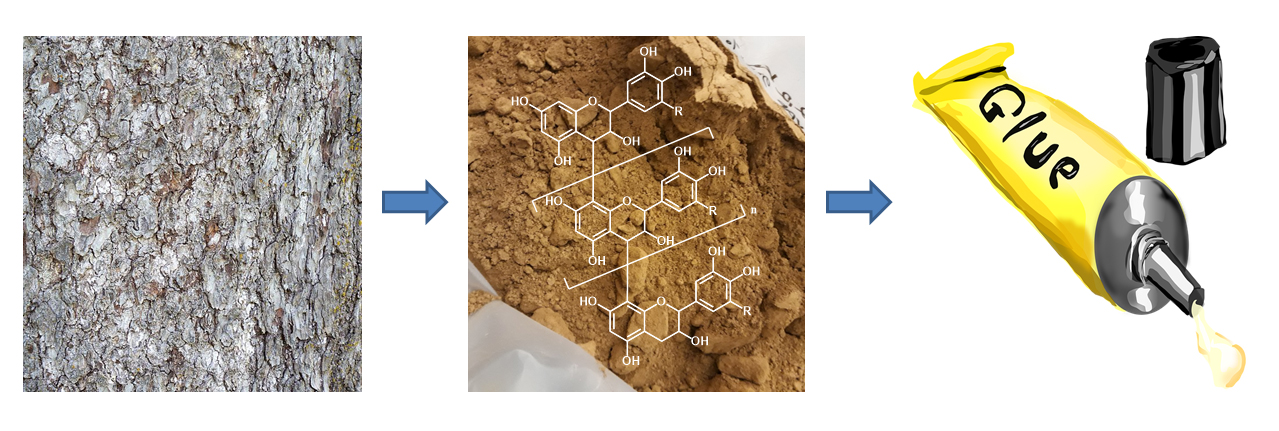

The bark of coniferous trees includes significant amounts of water-soluble tannin-polyfenols, which can be used as renewable alternatives for fossile and toxic phenol compounds generally used in glues.
Finnish forest industry produces some three million tons of coniferous trees’ bark as by-product. Most of the bark is burned in sawmills or pulp mills for energy purposes. More effective use of bark could offer a possibility to create new business.
At the moment tannines are produced with water-based extraction processes from tropical trees, such as acacia. Tannines are used mostly in leather colouring, but they can also be applied to glue applications.
Worldwide, the production of phenole based adhesive resins is about four million tons per year ¬– valued at USD ten thousand million. Adhesive resins are mostly used as binders in production of plywood and laminate.
The aim of the Susbinders (Sustainable binders from bark) project is to optimize the extraction process, where valuable polyphenol is extracted from tree bark. In addition to this, the project researches how components can be used in various glue applications.
Developing the extraction process of polyphenols towards industrial scale is being examined by the Technical Research Centre of Finland VTT, the Natural Resources Institute Finland and South-Eastern Finland University of Appiled Sciences, Xamk. The SusBinders-project started in 2017, due to end in 2020.
